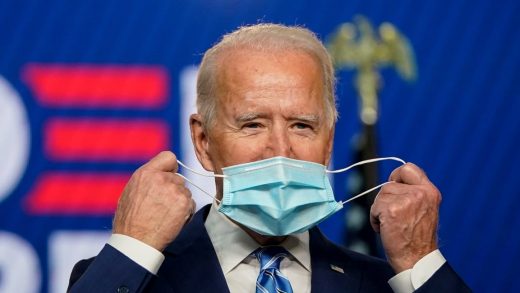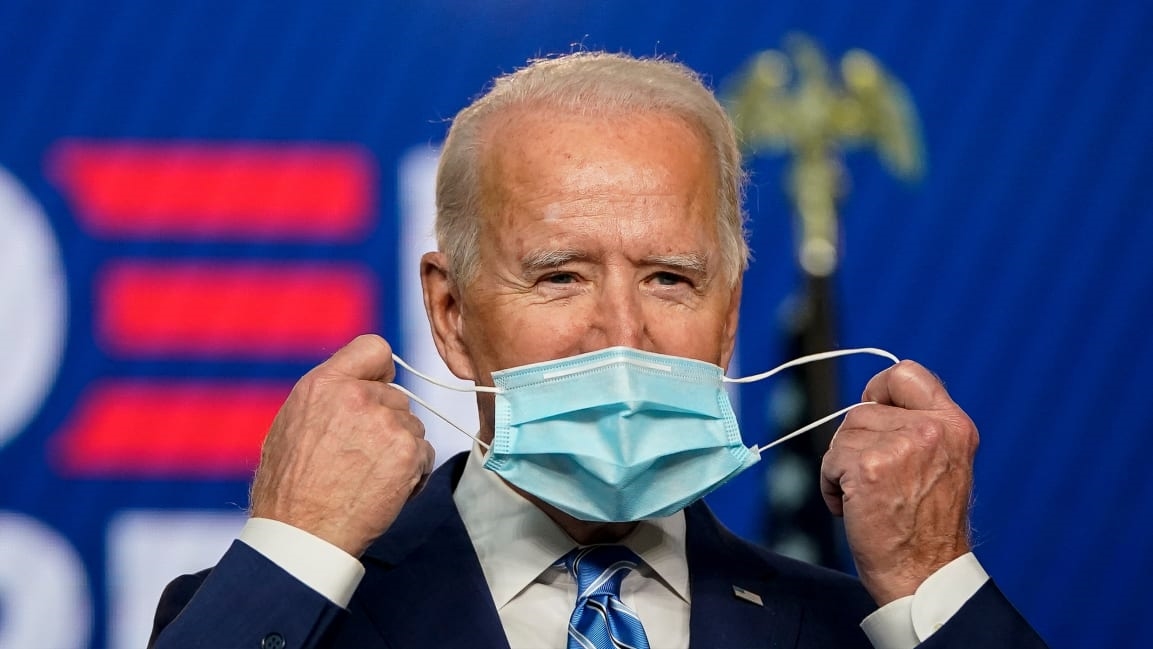How can Biden beat COVID-19? We asked Obama’s healthcare guru
When Joe Biden is sworn in as president on January 20, 2021, the U.S. could be approaching 500,000 lives lost to COVID-19. As the rest of the world has already proven, these deaths were not inevitable, but the result of the science-denying Trump administration and GOP, which failed to control the pandemic.
Biden has acknowledged the need for an immediate COVID-19 response. But there’s a catch. While he’s taken the presidency, Democrats may be unable to flip the Senate (Democrats have 46 seats, Republicans have 48 seats, and two seats may go to a runoff in January). So while Biden can propose bills, and the Democrat-controlled House is likely to pass them, they could still face the same, aggressive vetoing of Mitch McConnell and the rest of the Republicans in the Senate, which has ground policymaking to a halt.
What can Biden do in this situation to design and implement a response for curbing the spread of COVID-19? I asked Andy Slavitt, the former acting administrator of the Centers for Medicare and Medicaid Services appointed by President Obama, just this question. Slavitt made his name saving America from a previous healthcare crisis, when he was part of the team that repaired the fledgling Healthcare.gov website. And over the past year, he’s been advocating for practical COVID-19 strategies on his podcast, Twitter, television, and even directly to our government itself.
I asked Slavitt: “Andy, you are Joe Biden. It’s day one, and you don’t have the Senate on your side. How do you design and implement a COVID-19 response without them?”
Unfortunately, he’s not positive about the possibilities. “There’s nothing to be optimistic about right now. I will tell you, having someone in charge (like Biden) who manages it, who won’t sleep at night until the problem gets fixed, will be better,” says Slavitt. “[But] we have a scary winter coming up. I’m nervous for the winter. There’s a lot of people who travel for Thanksgiving who are at risk.”
That said, here are the steps Slavitt would take if he were in Biden’s shoes.
Use executive power
The first step for Biden is to “work with the tools you have,” says Slavitt. Specifically, he’s referring to executive power. Experts agree it’s probably not legal for a president to mandate a national quarantine. However, a president can enact the Defense Production Act—and Biden has actually said that he will.
You probably heard about the Defense Production Act already this year, as many speculated that Trump could turn to the policy to produce ventilators and distribute supplies. It’s a law that allows the president to command American companies to create necessary supplies in times of critical national defense, but Trump never used it. In this case, Slavitt would like to see American companies producing PPE. Gloves. Masks. Gowns. You name it.
While PPE shortages are rarely in the news these days, they continue to be a real problem for ICUs in the U.S. Outside hospitals, PPE is something we’ll need in excess to reopen our country safely rather than haphazardly, experts agree.
The other thing we need more of are testing kits, and the Defense Production Act could spur that along, too. As of now, most of us view testing kits as something you get when you think you have COVID-19, and you go to a walk-up or drive-up facility to get swabbed in your car. But that’s only a baseline of what we can do with the right support. Slavitt imagines more people testing themselves at home, and pretty much all the time before they enter public spaces. This would make gathering safer, since you can spread COVID-19 for nearly a week before symptoms show up.
“There are all kinds of technologies, like [a COVID] breathalyzer, that could make entrance to school safe,” says Slavitt. “But they require significant production challenges. The technology is good, but you have to find the production capacity to develop those things.”
The Defense Production Act would allow President Biden to mandate mass-production of the best safety technologies we already have, and make them available in numbers that could help drive down new infection rates.
Ask Congress for money
One problem with controlling COVID-19 today is that people have to work to make money, and that means they have to leave the house. They also might be sick without a place to quarantine.
In April 2020, Slavitt, alongside Scott Gottlieb, a former FDA chief under Trump, proposed a plan for a $46 billion COVID-19 response. Of that gargantuan number, $30 billion was actually set aside for 18 months of financial assistance (or a $50/day stipend for people who voluntarily self-isolate), and $4.5 billion was set to convert motels and hotels to COVID-19 self-quarantine centers. The remaining $12 billion was to hire a 180,000-person contact tracing team.
But to secure this money, you need the support of Congress, which requires the Senate. “If you’re Biden, you spend some political capital to work with McConnell to get that done,” says Slavitt.
When I scoff, pointing out that this compromise seems impossible after more than a decade of the Senate shutting down the policies presented by Democrats, Slavitt doesn’t budge. “You do need Congress for these things, and it’s not an ideological issue as much as a public health issue,” he says. “Think about it. Around the world, the thing you measure the most if you want to slow down the virus is what percentage of people who have the virus pass it on to other people, and what percentage . . . don’t spread it. In countries with better safety nets, people can stay home and not lose income. That’s what you need here.”
Biden would also need the Senate’s support to shunt critical funds to individual states if they are to distribute an eventual COVID-19 vaccine, which both Slavitt and state health officials are saying is necessary to roll out vaccines effectively. Right now, those costs are set to fall on states themselves. But a recent audit found that the 50 states already had debts of $1.4 trillion in 2019, a figure that has only grown during COVID-19. States need government funding to optimize vaccine delivery. Slavitt recommends that Biden check in with scientists to understand how to best administer and distribute vaccines en masse. Then states will need funds to implement the plan.
As for implementing contact tracing, that’s necessary but a back-burner issue, relatively speaking. “It’s useful. It’s not going to solve the problem by itself,” says Slavitt—largely because contact tracing isn’t effective when we have the infection rates that we do in the United States. “Once we get cases down and we want containment, contact tracking will be very important.”
Shore up the American people
The last suggestion Slavitt offers is something Biden could start right now, before he’s even sworn in. It’s the most difficult challenge in front of Biden of them all, Slavitt says.
“The hardest step is the bully pulpit, you need to start that immediately, communicate with people in a way that brings the temperature down on the issues. And that will be the most challenging thing,” says Slavitt. “It’s a divisive election. There’s a lot of healing that has to go on.”
Since March, the GOP and its constituents have framed COVID-19 as a partisan issue, when in reality, it’s a public health issue. Viruses do not care who we’ve voted for or what we believe about medicine or media bias; they attack the population indiscriminately. And we have 230,000 Americans who have died in terrible proof of this point already.
Biden is addressing our country divide already, having urged unity and the need for a rapid COVID-19 response in his address Saturday night.
“This is a sociological problem, not a technological problem,” Slavitt concludes. “Africa has 1.3 billion people. They only have 35,000 deaths. This is not about a high-tech silver bullet. It’s a harder challenge. We know the answer, don’t breathe near one another or get to crowded spaces . . . that’s what we have to face, and that requires society to come together.”
(21)



